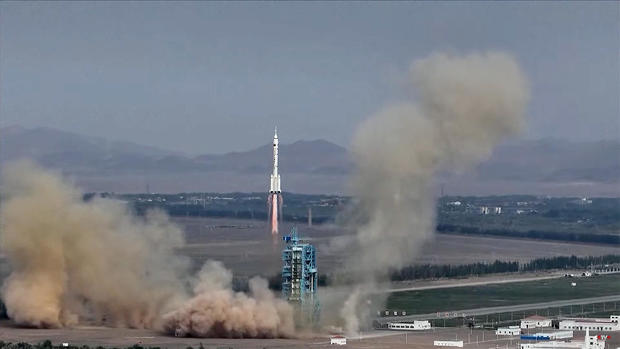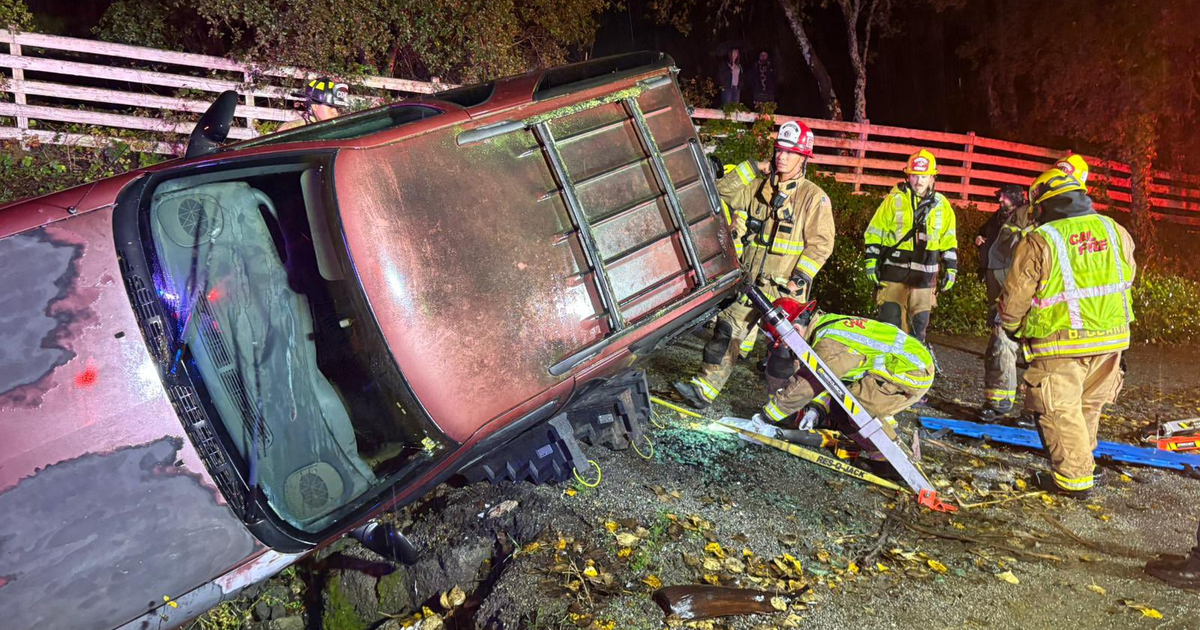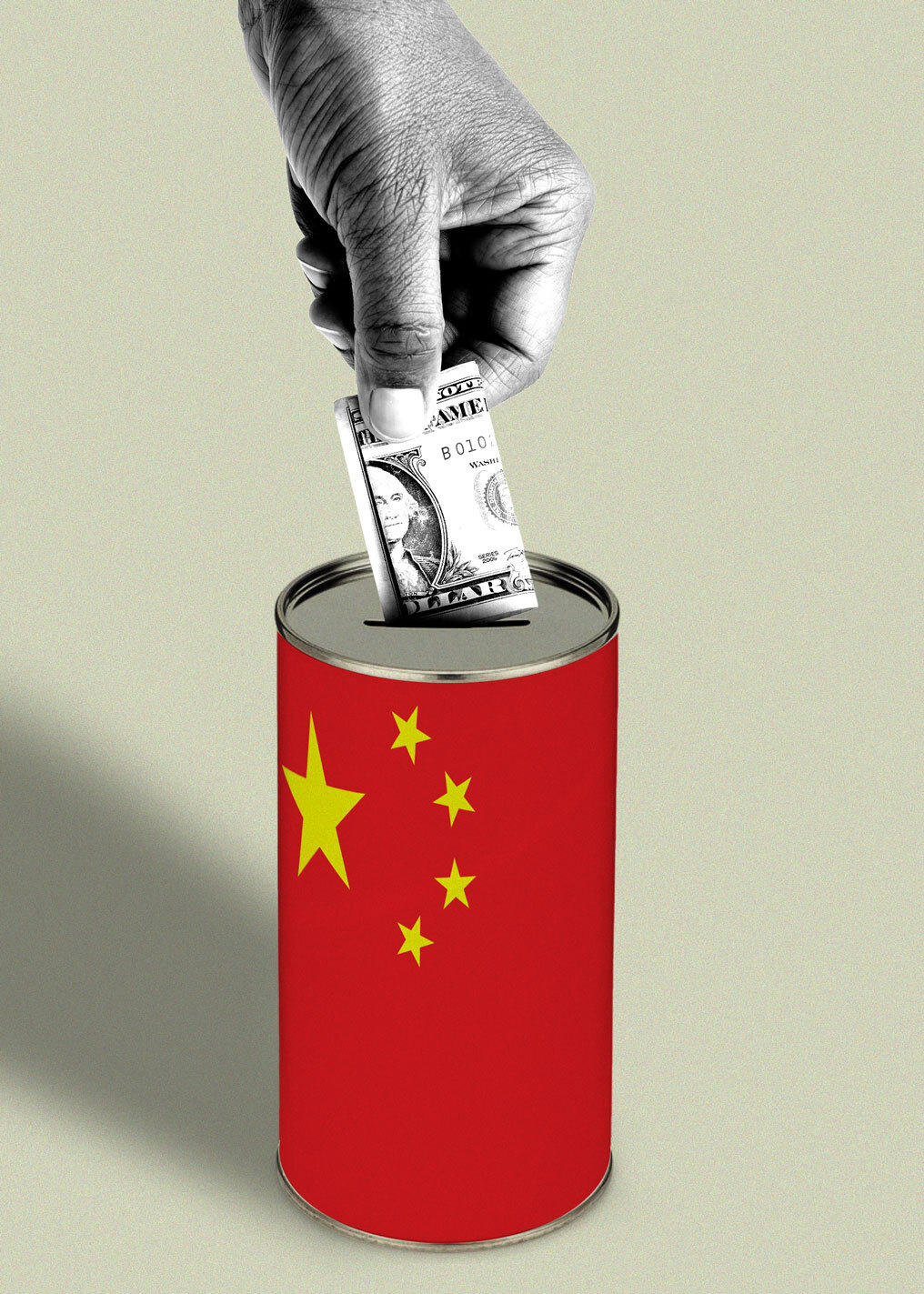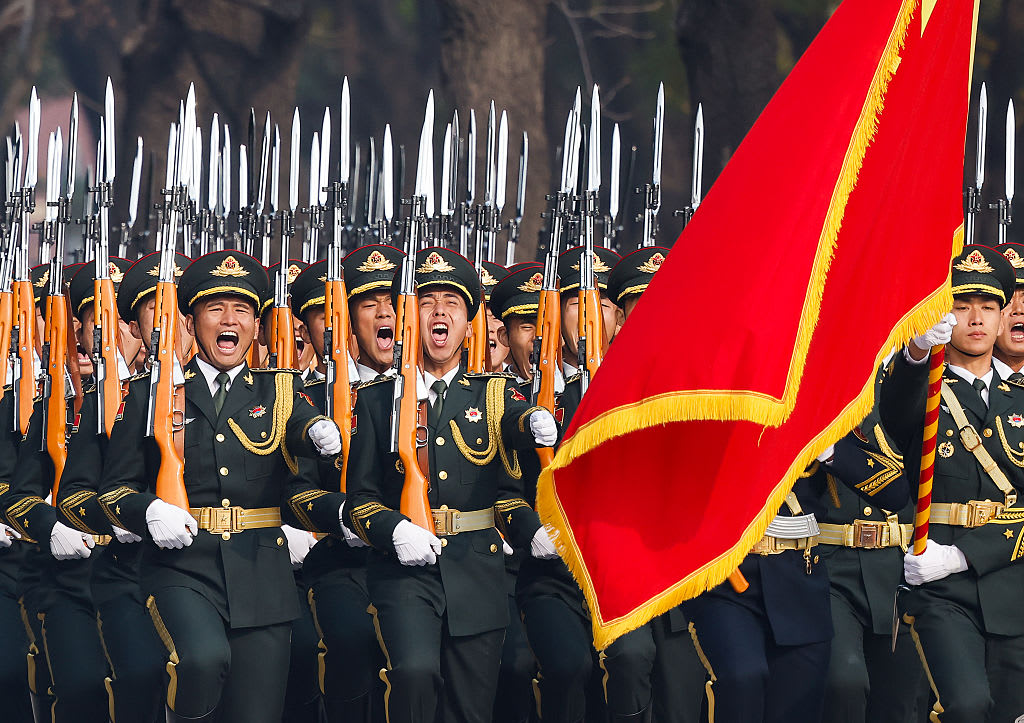China launches fresh crew to Tiangong space station, maintaining a permanent presence in orbit
China launched a fresh three-man crew to the Tiangong space station Tuesday evening (U.S. time) to replace three fellow "taikonauts" wrapping up a six-month stay in space. It is the second such crew handover since the Chinese established a permanent presence aboard the lab last June.
With veteran commander Jing Haipeng, 56, at the controls, flanked by Zhu Yangzhu and Gui Haichao, the first non-military taikonaut, or astronaut, the Shenzhou-16 crew blasted off from the Jiuquan Satellite Launch Center atop a Long March 2F rocket at 9:31 p.m. EDT (9:31 a.m. Tuesday local time).
Jing is the first Chinese flier to make four trips to space while Gui, a professor at Beijing University with a doctorate in astronautics, is the first civilian taikonaut to reach orbit and the first to visit the Chinese space station.
The launching, China's fifth piloted flight to Tiangong and its third since around-the-clock staffing began last June, was carried live on Chinese television, providing spectacular shots of the rocket's climb to space and interior views of the taikonauts as they calmly monitored cockpit displays.
The 191-foot-tall Long March 2F rocket, equipped with four strap-on boosters for extra power, reached its planned preliminary orbit about 10 minutes after liftoff and promptly released the Shenzhou-16 ferry ship to fly on its own.
The capsule's two solar panels then unfolded, clearing the way for a series of rendezvous rocket firings to catch up with the Tiangong station. Docking was expected about six hours after launch.
The launching boosted the total number of humans in orbit to a record 17, with three taikonauts already aboard Tiangong awaiting their replacements and 11 crew members aboard the International Space Station, operated by the United States, Russia, the European Space Agency, Japan and Canada.
Four of the ISS fliers, members of a commercial crew made up of retired astronaut Peggy Whitson, adventurer John Shoffner and Saudi astronauts Ali Alqarni and Rayyanah Barnawi, plan to undock and return to Earth Tuesday with a splashdown in the Gulf of Mexico just after 11 p.m. EDT. By then, the Shenzhou-16 taikonauts are expected to be on board Tiangong, joining Shenzhou-15 commander Fei Juniong, Deng Qinming and Zhang Lu, who were launched to the outpost on November 29.
After a brief handover period to familiarize their replacements with the intricacies of life aboard the space station, Fei and his crewmates will undock and return to landing in Inner Mongolia to close out a six-month stay in space.
Like NASA and its partners in the ISS program, China aims to keep its space station permanently crewed by rotating teams of taikonauts. The Shenzhou-16 crew is the third crew in that sequence.
The Chinese space station is made up of three large modules connected in a T-shaped configuration. The Tianhe core module, launched in April 2021, is the centerpiece of the complex, providing crew quarters, life support systems, communications, spacecraft controls, an airlock and multiple docking ports.
The 450-ton International Space Station is made up of 13 pressurized modules provided by the United States, Russia, the European Space Agency and Japan. Construction began in 1998 and the lab has been permanently staffed by overlapping astronaut-cosmonaut crews since 2000.
The Tiangong station has a mass of about 100 tons and is roughly one-third the size of the ISS. It has been permanently staffed since June 2022 with the arrival of the Shenzhou-14 crew. While smaller than the ISS, the Chinese lab is newer and equipped with state-of-the-art equipment, computers and instrumentation.
The ISS will be de-orbited in 2030, leaving Tiangong the only government-operated space station in low-Earth orbit. NASA is counting on commercial space stations operated by private companies to provide research opportunities in Earth orbit while the U.S. agency pursues a return to the moon later this decade.
China plans to launch its own taikonauts to the moon starting in 2030, fueling the latest chapter in an ongoing superpower space race.







